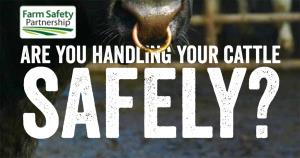Those handling cattle are constantly at risk of being crushed, kicked, butted or gored, and the risk is heightened if the animals are not used to being handled or veterinary work is being carried out.
According to the Health and Safety Executive, animals have been the third biggest cause of fatalities in agriculture over the past five years, and the second biggest cause of non-fatal injuries over the past three years.
Safety around handling cattle is clearly a serious issue and something that needs to be improved. Fortunately, there is plenty of useful guidance out there to help farmers keep themselves and their employees safe.
Click here to watch video guidance on the theory of handling cattle safely from Miriam Parker and the Health and Safety Executive of Northern Ireland and click here to watch their video on putting theory into practice.
The Health and Safety Executive also provide some concise written guidance for safe cattle handling on their website, which can be accessed here.
Farmers must ensure the following are in place when the time comes to handle cattle.
- Proper handling facilities, which you keep in good working order
- A race and a crush suitable for the animals you handle
- Trained and competent workers
- A rigorous culling policy for temperamental animals
As with all work activities on farms, the law requires farmers to assess and control risks from cattle handling so far as is reasonably practicable.
